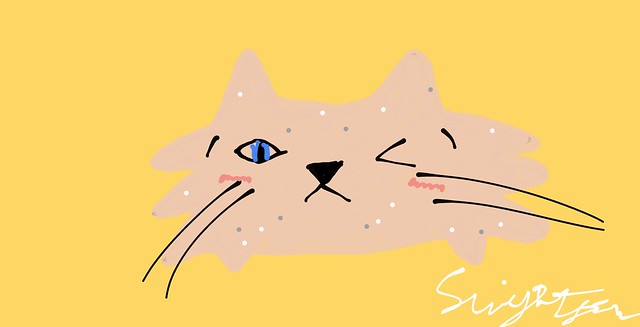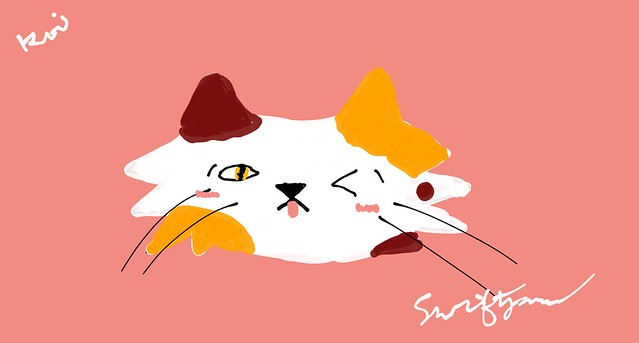Howlkha shares how to write fight scenes just like the Warrior Cats books.
![[graphic novel page of RiverClan defending its borders against WindClan]](https://blogclan.katecary.co.uk/wp-content/uploads/2023/05/Battle.ASIR_.webp)
[graphic novel page of RiverClan defending its borders against WindClan]
This article will most likely be split into two or three separate posts, based on the amount of information needed to write a fight scene, that mostly applies to the warrior cats fandom.
The first part will be covering the basic structure of writing a fight scene, and the difference when it comes to the amount of characters.
Note:It is important to view this post, not as the attempt of copying the Erin Hunter writing style exactly, but as a helping point based on both what is seen in the books, and my own writing experience. It is meant for warrior cat au’s, and generally, if you’d like to become an author of your own, it is encouraged to find your own unique writing style before starting.
Writing a fight scene:
For most writers, it is very daunting to write a full on fight scene, regardless of the setting, and so this section is dedicated to the writing of fight scenes in the world of the clans.
Whenever writing a fight scene, the most important thing is keeping track of your characters, whether that be the amount, their placement, or if they’ve been defeated. One of the easier ways to do this would be figurines on a map of some sort, but that can be expensive, and is usually more common amongst the writing of human, or human-like creatures
For warrior cats, it’s more convenient to use a list of the characters in the battle, (which deems it less necessary when it’s only two) no matter if you name them in the actual writing, having assigned names to each of the characters will help to keep things consistent, especially when it comes to background characters. It is also noteworthy to write down if the in-perspective character knows the cat who’s being described by name, or if they heard it on the battlefield.
(Example: “The smoke coloured tom raked his claws down the calico’s side”)
In the example above, we did not name the characters of the story, but on the list they should be (placeholder names Shrew and Tangerinesnout)
And that brings us to the next segment, storyboarding. Many may be familiar with storyboarding within animation, however, it can be useful for writing fight scenes as well. For writing, it may not apply to every basic movement, but every important action. So any attacks, dodges, injuries, etc., can be written in the most basic form to start. Maybe you’d start by writing down any major injuries the characters will get, or how many claw slashes one gets in before they’re knocked over by a different cat.
From there, like the in-betweens from animation, you fill in the gaps. Descriptions of how they get to the next action, if they see another cat get hurt, maybe how they’re feeling before they take to a killing actions etc.
It is important to note that in fight scenes, regardless the story, there will not be in-depth descriptions of anything. Descriptions of the scenery will be given before or after the fight, you will not be giving intense descriptions of one’s fur pattern as they lunge towards you. The only type of description that won’t slow down the battle, is the feeling when a in-perspective character gets injured(physically or mentally). It is still split into smaller phrases, but it’s easier to add more on the subject. To add more depth to in betweens, you could add some type of mental notes, maybe they see one of their clan members get seriously hurt in the corner of their eyes, earning a moment of distraction.
(What not to do: “As the tabby raked her claws down Jaysong’s pelt, she could feel the dry grass under her paws. It was crisp, brittle to match the yellow colouration of summer’s driest weather. The blades dug into her paw pads, barely enough to be painful, but nonetheless, one of her least favourite feelings”)
In the example above, there was only a single action, which could end up being nearly forgotten as “Jaysong” was only recounting the grass, instead of reacting, and it slows the scene to the pace of a area description one.
(What to do:As the tabby raked her claws down Jaysong’s pelt, she could feel it’s searing pain. Fire spreading through her fur as it was soaked through with blood. She stumbled for a moment. She managed to shift her weight to her back legs, and launched herself at the other feline, for storyboarding the main actions would be the tabby clawing “Jaysong”, and the latter retaliating”)
In the example above, there was the action, a moment of describing how Jaysong(the character in perspective) felt physically, and the actions that brought her to her next attack.
This segment is about keeping track of injuries, and/or the defeated.
Similarly to the first segment, keeping track of the defeated is very important, but very simple(defeated could mean either severely injured, having retreated, having been incapacitated or killed).
If you want major injuries to occur, it is better to plan them ahead and add them to storyboarding. It is unfortunately less simple to plan any background character’s injuries,in a short amount of time, as the focus will not be on them.
Based on which character is in perspective(we’ll use Jaysong for now), they will see different side characters get injured. It’s a lot less common to note this “in writing”, but it’s good to note which side is winning and losing. So the most planning(which is very little) would be for those closest to Jaysong, or closest to other characters of higher importance, such as friends, major clan roles, or family THAT JAYSONG CAN SEE. These closest characters will be affected by Jaysong’s movements, maybe they run into each other backwards, or the side character needs to dodge as Jaysong falls towards them, and vice versa.
Side characters can be allies, or enemies, the latter of which is more commonly written about. An enemy attacking Jaysong’s sister, will in higher likelihood, be more seen than a random ally getting a bad scratch. Solo fleeing members should be noted, as they can determine and show whether the clan is losing or not.
The last segment of all battle scenes is the area. As was said beforehand, the scenery would be described before or after the actual battle, but we are speaking of the area. This is the amount of space the fighters have, and possible objects or hazards that wouldn’t be noted in the heat of battle.
(A great example of this is from the book “Leopardstar’s Honor” when Whiteclaw falls into the gorge during a border patrol’s battle)
Though this can be applied to most battles, it is more useful when it is a smaller battle, adding more dangers, confusion, and possibly sudden death. Using the same example as above, it would be more dramatic if one cat were to accidentally fall into the gorge and the other fighters might be surprised, rather than in an all out war, several cats just being tossed over the edge for convenience, or even just lack of space.
Larger fights will already bring a lot of confusion, dramatics and overall excitement to the reader, which deems the “dangerous terrain” to be less necessary. On the same side of this coin, overusing this with any and all battles in your writing can make future deaths in this style far less emotional to the readers.
Fight vs War:
While the difficulty in writing fight scenes might be spoken of often, the sheer difference that comes with numbers is not as common a subject.
All of the previous information in its entirety, was based off of the common, patrol, or clan battle, rather than a one vs one fight.
This does not mean that none of that information can be used for small fights, however, hopefully this section will clarify specifics.
Area, scenery and storyboarding are still extremely important for this type of fight(a one vs one), but the fighting style, character notes, and added dangers differentiate slightly.
In a more personalized fight, the amount of energy put in will differ. Friends or siblings who’ve had a disagreement or are just fighting out of pure rage, no matter what the scenario, will never go all out if they both care(d) about one another, unless they’re not their regular self for a reason or another. Rivals or nemesies on the other hand, will most likely use all their energy, never pull a hit, without the fear of hurting the other, and probably even the intention.
Keeping track of characters in this instance is also without a doubt the easiest, as it only involves two, but keeping track of wounds, energy levels and such is still necessary. With large groups fighting, it’s common to generalize fighting abilities to what’s most consistent within that clan, to avoid writing complications. When writing about two cats fighting, it’s more important to pay attention to detail about skills, experience, and body types(the latter of which will be covered in the next post).
If they have similar builds, they will be matched, one shouldn’t win out of sheer plot for the story, or it’d be straying into “main character” domain. If one of the cats is far smaller, they could try and use the terrains or surrounding objects to defeat the opponent.
(Example:Jaysong barreled into the Maine coon’s stomach as he reared to his back paws, causing one of them to catch on the uneven ground, and he tumbled onto his back)
In the example above, Jaysong, as a smaller cat, in close quarters combat, would not have the strength and momentum to knock over a large Maine coon, but she used the uneven ground behind him to trip up his balance.
This rule applies to any sort of pebble, mound of dirt, sharp branch, or even shallow water. Cats will use their knowledge, skills, experience, and the terrain they can fight on to their advantage.
In a battle without any other distractions, the fighters will usually be at their greatest when it comes to focus, if they aren’t fearful or in a state of rage. Without several other cats fighting and yowling around them to confuse them, they have full attention on their opponent, but this applies to both felines. Which is why, deathly area hazards are great in this scenario(if one wants the characters to not first handedly kill one another, or won’t want them to die at all). Without other distractions, the mentally occupied will focus all attention on their opponent rather than surroundings, unless they planned the fight beforehand.
The next post will be about fight moves, different body and fur types, and fighting signals. If there are any questions about the post, or about information I might’ve missed, feel free to put it in the comments.
After this series I’m up for suggestions of what to post next, so I’m open to warrior cats subjects you’d like to know about.




![[Ashfur joyfully looks at Squirrelflight who is grinning at him]](https://blogclan.katecary.co.uk/wp-content/uploads/2024/04/squirrelflight-ashfur-ginjaninjaowo.jpg)
![[Ivypool looks out from amidst the forest's ground foliage]](https://blogclan.katecary.co.uk/wp-content/uploads/2023/09/ivypool-385x300.jpg)





That was a really detailed article. I’ll keep your advice in mind next time I write a fight scene!
Great article! It’s really helpful!
Wow! I really liked this! Definitely using this next time I write a fight scene!
Great article!
Awesome article, this helps a lot!! :DD
Great article!!
Amazing article! This is some great advice!
This was super helpful! Great article!